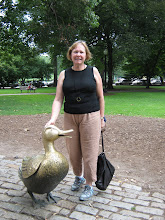What is an antelope? And why do they need a whole month to celebrate?
Antelopes are hoofed mammals with hollow horns commonly mistaken for deer. The name ‘antelope’ is a catch-all term for many species in the Bovidae family.
Antelopes come in a staggering range of shapes and sizes, with some built for pure speed and others for agility. The largest antelope (the giant eland) can stand as tall as 182 centimetres, while the smallest (the royal antelope) is only 25 centimetres tall.
Antelope is a catchall term for an astonishing variety of ruminating ungulates. Have you heard of or seen the word eland, gazelle, kudu, oryx, rhebok, springbok, impala, dik-dik, duiker? They are all antelopes. Impalas are widespread and abundant throughout much of sub-Saharan Africa and are easily one of the most common antelope species.
The rarest antelope in Africa is the Hirola. It is critically endangered as there is estimated to be only 300-500 left in the wild. Because of its scarcity the hirola has a day to itself. It is Hirola Day on 12th August.

All living antelope species are found in Africa and Asia (including parts of the Middle East). Most species are found in Africa.
Did you know that Uganda is home to about 29 antelope species, which is nearly a third of the species found across Africa?
There might be a lot of different types of antelopes, but there aren't many children's books about them. Probably because there isn't the need. A child who lives in Africa can probably identify many of them and use the correct name. A child in Australia hasn't the need to know all those names. When we look at animals of the African savannah, the students love saying wildebeest, gnu and impala. The best book to have if you want to get to know antelope is:
You may also be able to find some of these:
Often my students will look at an antelope and call it a deer, but antelopes and deer are different. Antelopes belong to the Bovidae family, made up of sheep, goats and cattle; whereas deer are members of the Cervidae family, which includes muntjac, elk, red and fallow deer, reindeer, roe deer, and moose.
Both deer and antelope are hoofed animals (known as ‘ungulates’). They are also ruminant mammals, which means they have multiple stomachs. This allows them to swallow food and then bring it back up for a second munch – a process known as ‘chewing cud’.
Antelope are indigenous to most of Africa, India, the Middle East, Central Asia, and parts of Eastern Europe, while deer originally come from the Northern Hemisphere, but are now native to Europe, Asia, North America and South America.
Deer have antlers that are shed and regrown annually, whereas antelopes have permanent horns that are not shed.
There are not many books about deer either, but they are much more likely to be found as characters in storybooks. Think of stories that feature reindeer and moose for starters.











No comments:
Post a Comment